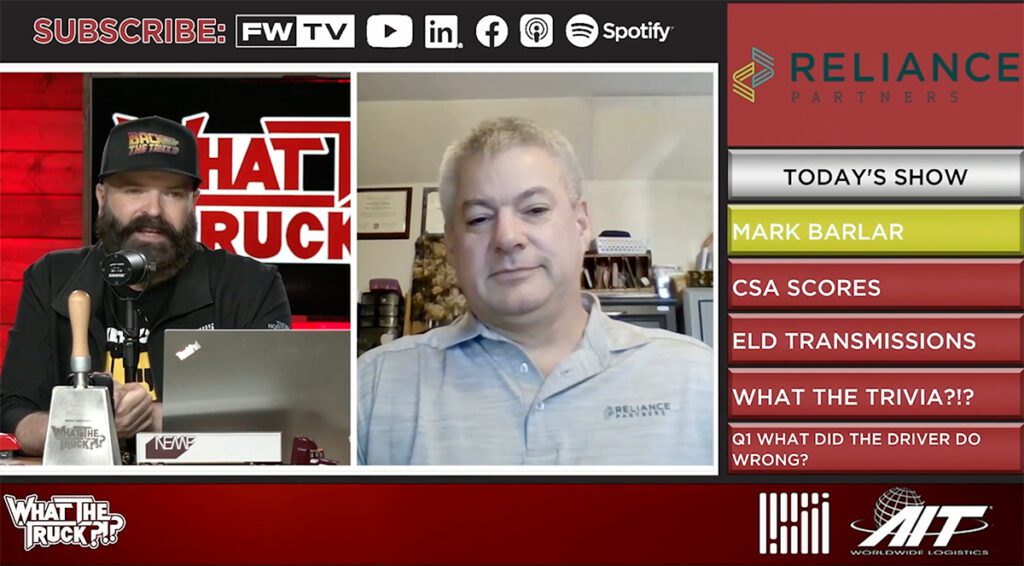February 24, 2023
ELD transfer violation could cause snowball effect on CSA scores

Reliance Partners’ compliance expert shares tips to avoid racking up points
Up until December, motor carriers’ Compliance, Safety and Accountability (CSA) scores weren’t impacted by a common hours-of-service violation: A driver not being able to transfer logs to a law enforcement officer during roadside inspections.
But now, the once zero-point violation could cost carriers at least three points and potentially more.
“This is pretty significant because what happens here is not only can we get hit with that one violation, but that could lead to several other violations, which really hits hard for the hours-of-service [category],” said Mark Barlar, director of Department of Transportation regulatory compliance at Reliance Partners, in an interview on WHAT THE TRUCK?!?
If drivers can’t transfer their ELD logs (three points), it’s probably due to not having the required instructions for the transfer in their vehicle, which costs the carrier another point. Failure to enter a file comment that the officer requires for the transfer costs one more point.
These three violations add up to five points — the same as not having an ELD in the vehicle.
To avoid this snowball effect, it’s essential to solve the first problem, which is ensuring drivers know how to do the transfer to begin with.
There are four avenues for ELD data transfer. Electronic transfer through wireless web services is the most common, according to Barlar. Emailing is also prevalent, although drivers should be aware their email is going to the FMCSA and not the officer. Drivers can also transfer records locally by connecting to a computer via USB or Bluetooth, although these two ways are less common.
Barlar recommends all drivers practice ELD data transfer to ensure they know what they are doing when it comes time for the real situation.
They should also keep the required documents in their vehicles to avoid further points: instructions on how to do the ELD transfer, what to do during a malfunction, eight blank logbook pages and the ELD manual.
HOS is one of the seven Behavior Analysis and Safety Improvement Categories (BASIC) that count toward a carrier’s CSA score, but many carriers are at a disadvantage against short-haul carriers that have less exposure to HOS violations. Short-haul drivers who operate within a 150-air-mile radius aren’t required to have an ELD as they record their hours worked on time sheets, reducing the number of applicable HOS regulations.
Because companies are weighed against competitors’ performance in each category, this means a carrier could quickly find itself in the ‘alert’ status for just a few violations, according to Barlar.
This makes it all the more critical for motor carriers to check their CSA scores at least once a month and ensure their drivers are eliminating the potential for violations that were once seemingly small but aren’t so small anymore.